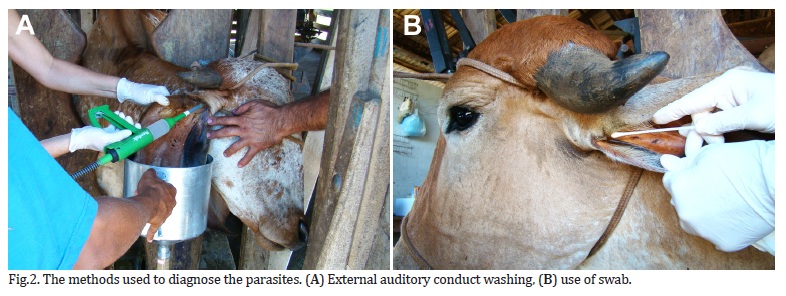We evaluated the dynamics of ear infestations caused by Rhabditis spp. and Raillietia spp., which were correlated with animal age, intensity of clinical signs and climate factors. Sixty-four Gir cattle were distributed into three groups: GA - 23 calves with 4 to 6 months of age; GB - 18 calves with 7 to 12 months of age; and GC - 23 heifers with 13 to 33 months of age. Five samplings, defined as S1, S2, S3, S4 and S5 were performed every three months from August 2008 to August 2009. The ear secretion was collected using the auricular washing method for the right ear and a swab for the left ear. A clinical assessment of the animals was performed, and they were classified according to the presence and severity of otitis. The highest relative frequency of rhabditosis was 52.2% in GC at the last sampling. In the first sampling, 42.2% of the animals were infested by Raillietia spp. The older cattle were more susceptible to infestations by both parasites. No correlation of Rhabditis spp. and Raillietia spp. parasitism with climate factors was found. The results showed that both parasites could infest Gir cattle, and in most cases, there was no co-infestation. Only older animals parasitized by the nematode showed clinical signs of the disease.
Cattle; parasitic otitis; Rhabditis spp.; Raillietia spp







